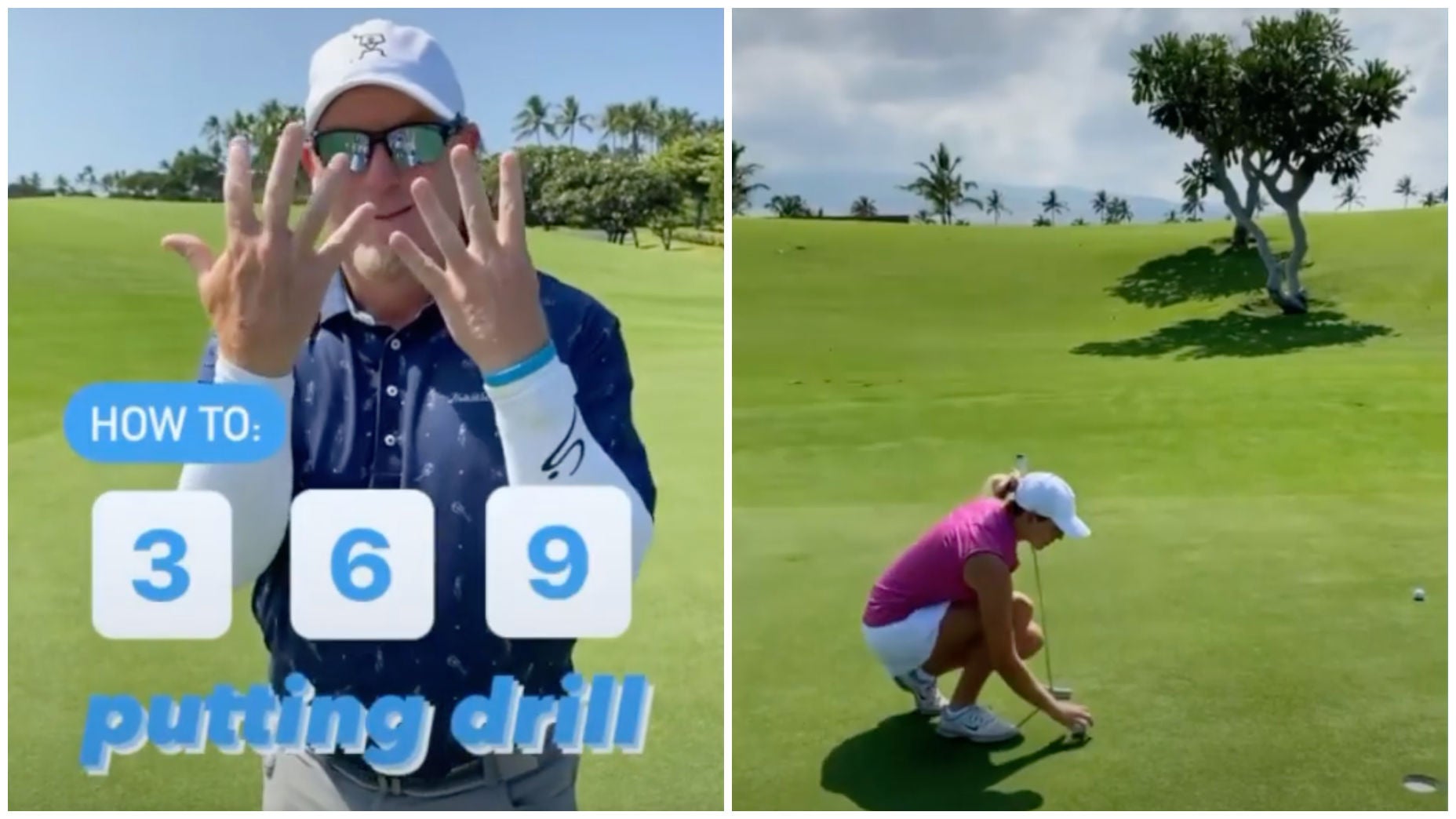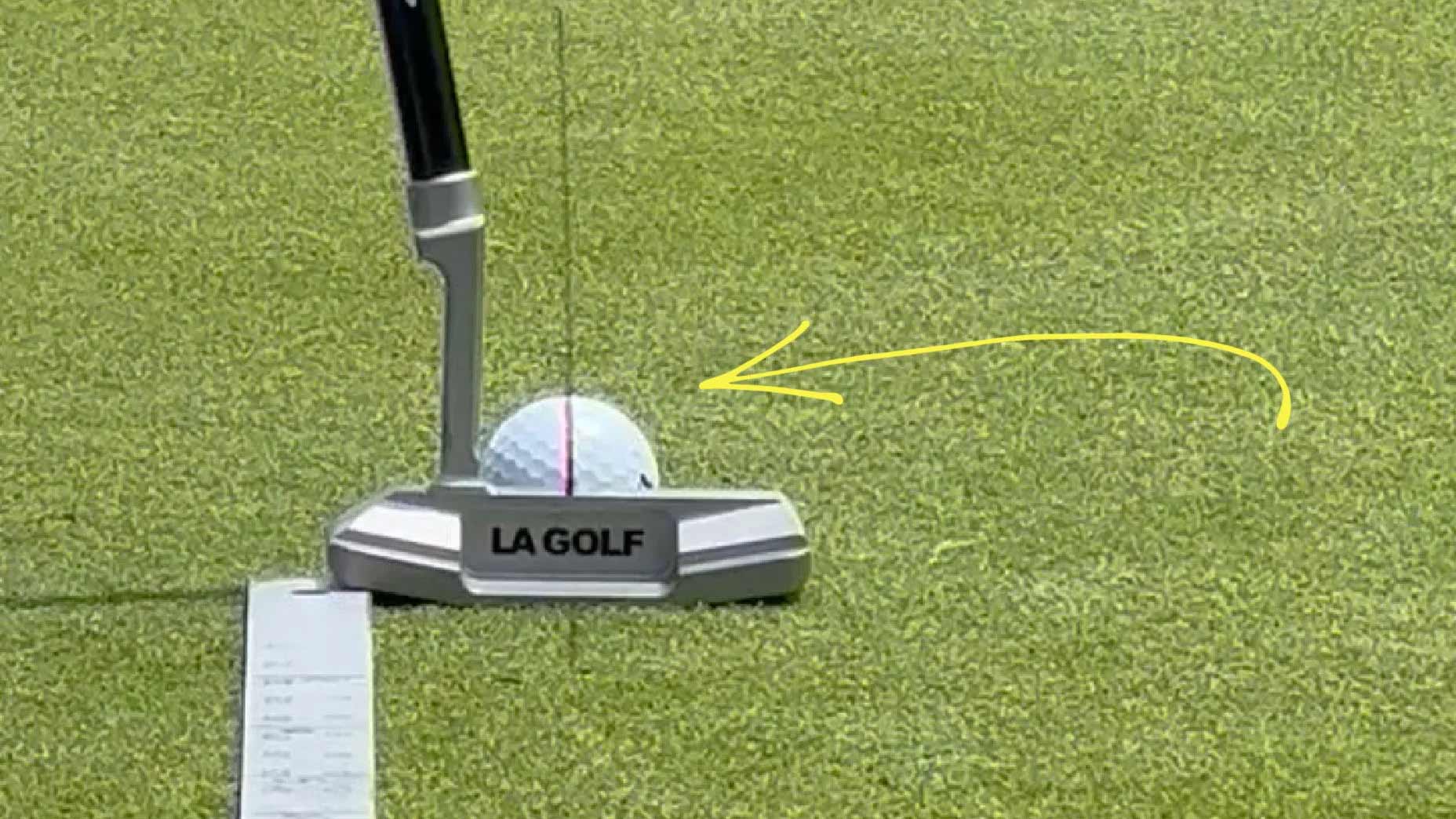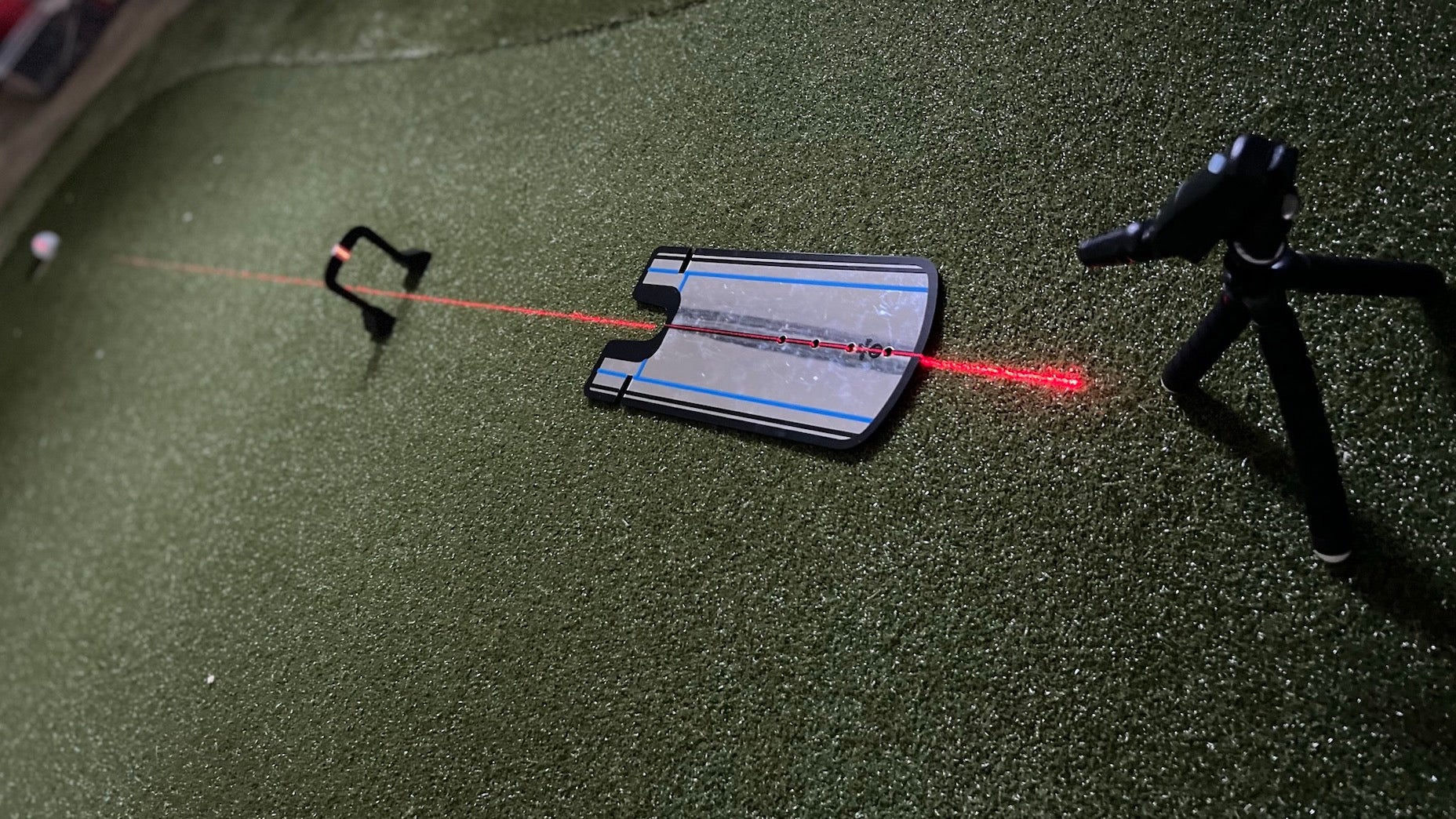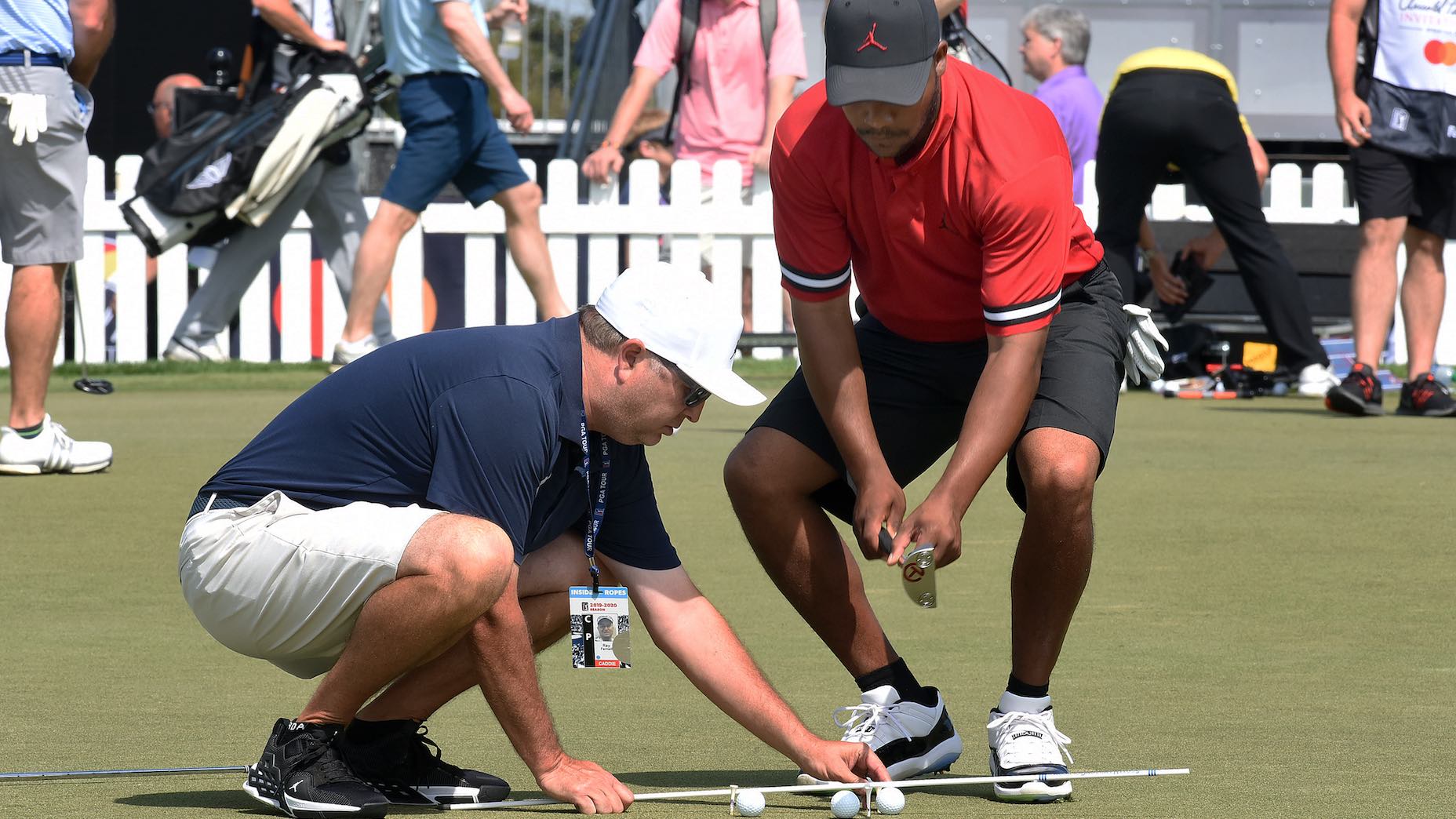The top 10 reasons why golfers miss short putts
- Share on Facebook
- Share on Twitter
- Share by Email

We have all experienced the frustration of missing a short putt. You’ve navigated the hole so well, and all you have to do now is convert that last short putt — and then you miss it. It’s heartbreaking, and incredibly annoying. Why did it turn out that way? Here are some of the most common reasons I see, and how you can fix them.

1. Putterface alignment
One of the most important fundamentals of being a good putter in general, and with short putts in particular, is aiming your putter face well. Studies have shown the importance of face alignment over stroke path. Why? Because the golf ball will deflect where the face aims. If everything else is perfect, it really doesn’t matter enough to offset this. You can easily practice this with the numerous training aids out there or by simply placing one of your clubs on the ground on the outside of your golf ball pointing to the outside edge of the cup. You may also see that many golfers will use the lines on the golf ball to help them to aim when playing. Whatever your method, remember that putterface alignment is king.
2. Bad contact
A golf ball hit relatively centered in your putter face is much more likely to go the direction that face is aiming and the intended distance. Should you miss the sweet spot or not make great contact with the ball, all rhyme and reason as to why the ball does what is does will not add up. Much like you might do with your regular golf clubs, you can either use face tape or face spray to double check that you are making proper contact with your ball and your putter. Should you make off-center contact toward the toe or the heel of the putter, this will often make the face twist at impact and the ball may not go where the face is aiming, and your distance control will suffer.

3. Incorrect ball position
One of the most important fundamentals in your game from tee-to-green is ball position. When I have a student who is historically a really great putter and all of a sudden they seem to start to struggle, most often, it’s a ball position problem. The reason ball position is so important is that a position that is too far forward or too far back will directly and immediately affect the body lines, which will affect your putter path. Here’s an example: If your ball position was too forward, your body lines would tend to be open and your path would almost always be move from out-to-in, causing pulls and cut putts. Not only will this be frustrating for short putts, this inconsistent contact will also make controlling distance on longer putts difficult. Having a simple set up routine can help you to find consistent putter and ball position.
4. Too much body movement
The next time you watch professional golf on television, watch how careful and still the professionals are on all their putts, especially on short putts. They are so still it is impressive. Recreational golfers do not look like this. More than likely, they are moving too much on their short putts. You must stay still. You should stroke, hold your finish and then look. This contradicts human nature which probably wants to try to see the ball go into the hole. Your patience will be rewarded with more makes on short putts.

5. Not reading greens correctly
Most putts have some degree of break, although on a shorter putt, you may not need to aim outside of the cup. Assuming that most short putts are straight would be a mistake. You can learn to read greens with just a little bit of training. Something as simple as walking in a circular path behind your golf ball can help you to feel if you are walking uphill or downhill to give you a sense of the tilt. The higher point would be where you should aim. Take that extra time to get a sense for the tilt of the green and it will pay off in more makes and lower scores.
Should you continue to struggle reading greens, you should begin to explore technologies that might be able to help. There are lots of great ones out there, but as an ambassador for Golflogix (Golflogix and Golf.com are owned by the same parent company, 8am Golf). I use their apps and green reading books. They work for me, and finding something that can help you maneuver the course will likely improve your short putting.
6. Going too fast
We have all been there and know the feeling when you miss a couple of short putts and start to lose your confidence. You dread having to try it again after there has been some failure. When you are in this situation, the worst thing you can do is rush. That “hurry up and get it over with” mentality can lead to a downward spiral. Last spring when I was teaching, I came to a realization that some of the true pain of being a poor short putter is that when you miss the putt and your vulnerability is showing……everyone is right there with you. While it certainly will be difficult, you have to slow down…take your time….read your putt…build your set up around your putter face….get your proper ball position…make the proper back stroke length…stay still….and hold your finish! Take your time and it will pay off. Stay on the stage with your playing partners even though it may not feel comfortable.
7. Poorly fit putter
Not all putters are the same, so it is important that your putter fits you properly starting with length. The length of you putter should allow you to get into proper posture so that you can bow properly from your hips, allowing your arms to hang. This proper posture will create a natural path under your shoulders for your arms to swing and this will make it much easier to convert your short putts. Taking the time to seek out putter fitting can make a big difference when you need to make that last putt on every green.
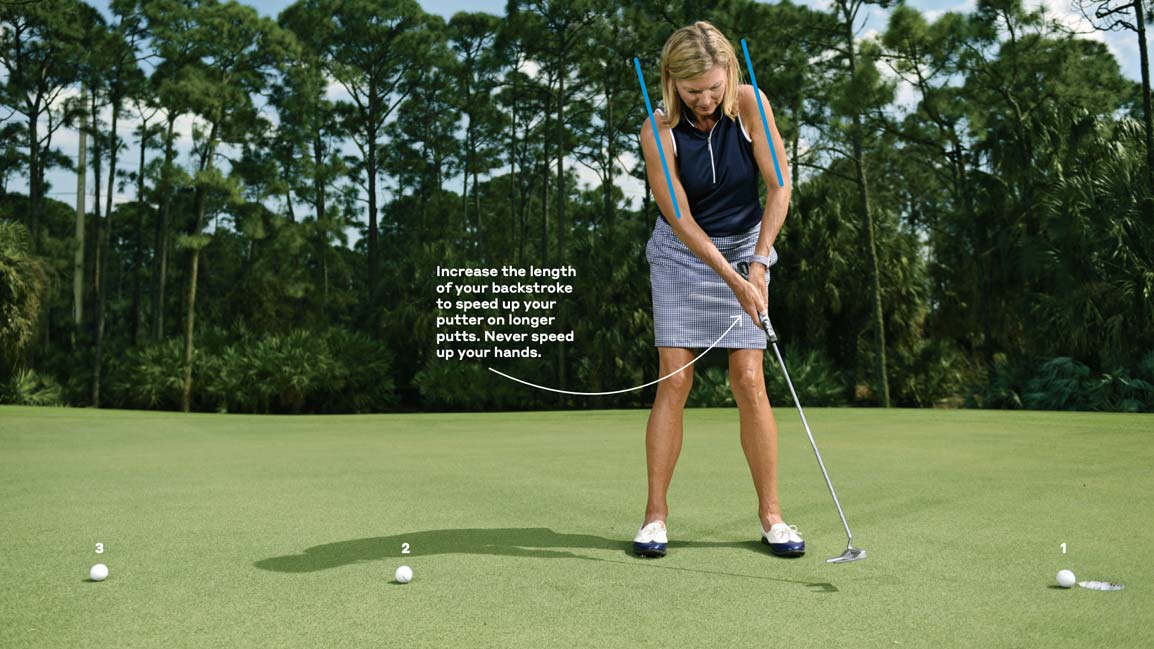
8. Overactive hands
Short putts require accuracy above distance control. Needing control rather than power prioritizes fewer moving parts. An easy way to test your accuracy is to putt with one hand only. You should be able to hit putts straight with one hand; overactive hands can twist the face and cause short putts to miss their intended starting line. Once you practice starting your putts on line with one hand, you can move to your regular grip.
9. Assuming you will make all your short putts
Good technique will lead to confidence and more made putts. Attitude can make a big difference. If you think you “should” make all of your short putts this pressure can lead to minimizing the process of set up and good fundamentals. Recognize the value of making your shorter putts and give them their due respect and the time it takes to be proficient.
10. Not holding your finish
A big part of being a good short putter is being patient and not rushing the stroke and being willing to truly hold our finish. Many putters fail to hold their finish and release one of their hands early. A good rule of thumb is to hold on with both hands and hold your finish. Your hands stabilize the face and this is certainly important when you know that face alignment is one of the most important fundaments in making short putts. Stroke, hold and then look. This patience will pay off with more pars and birdies.
Latest In Instruction

Golf.com




